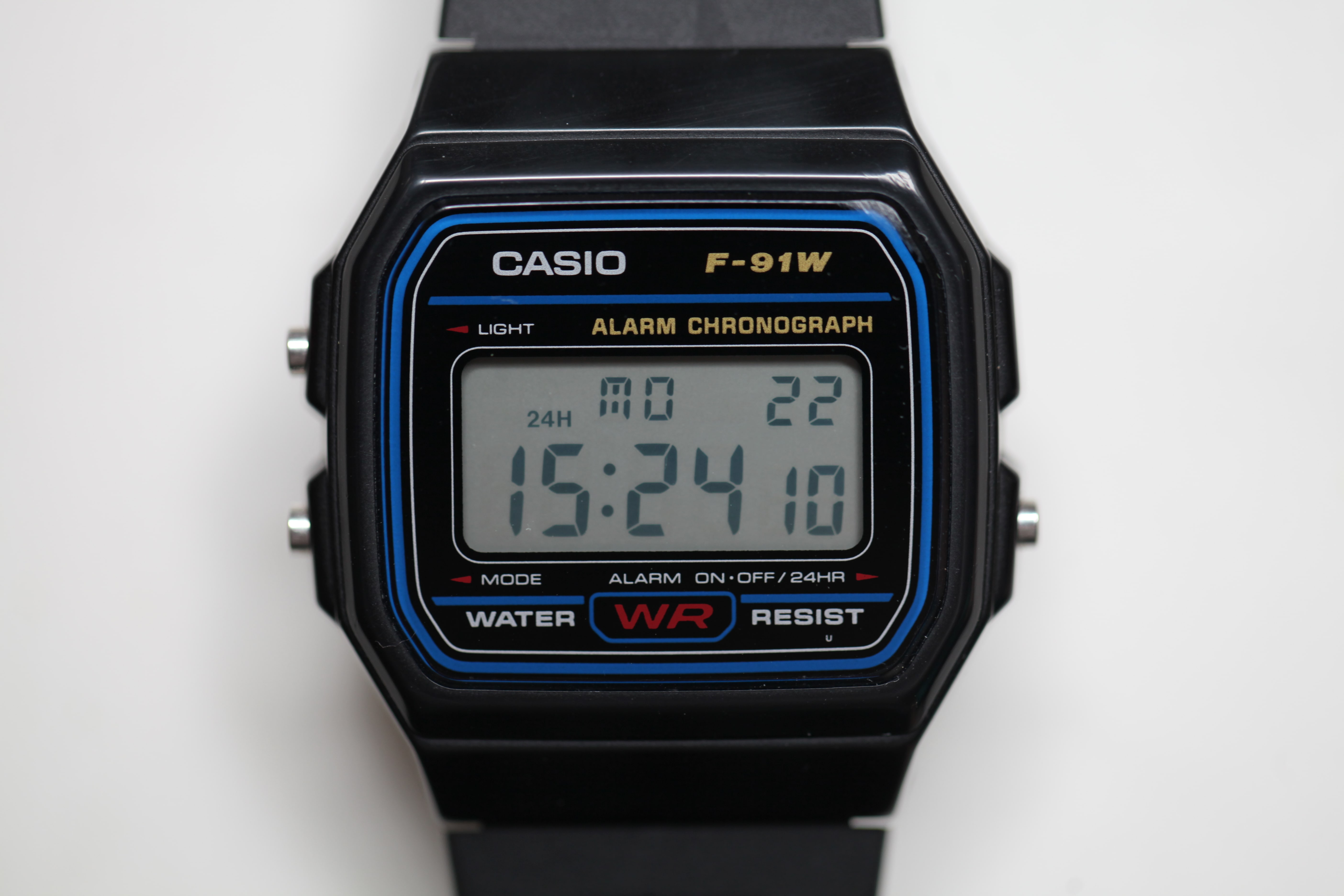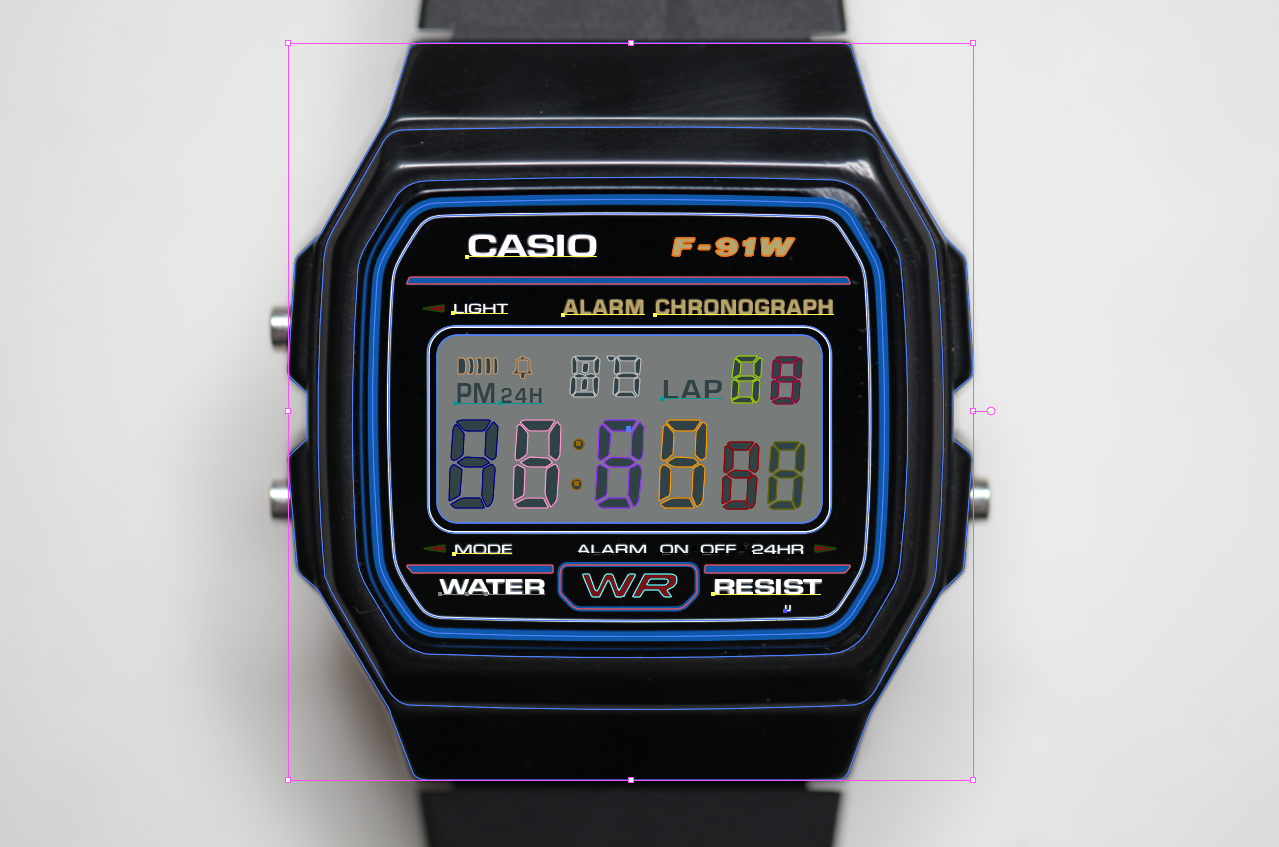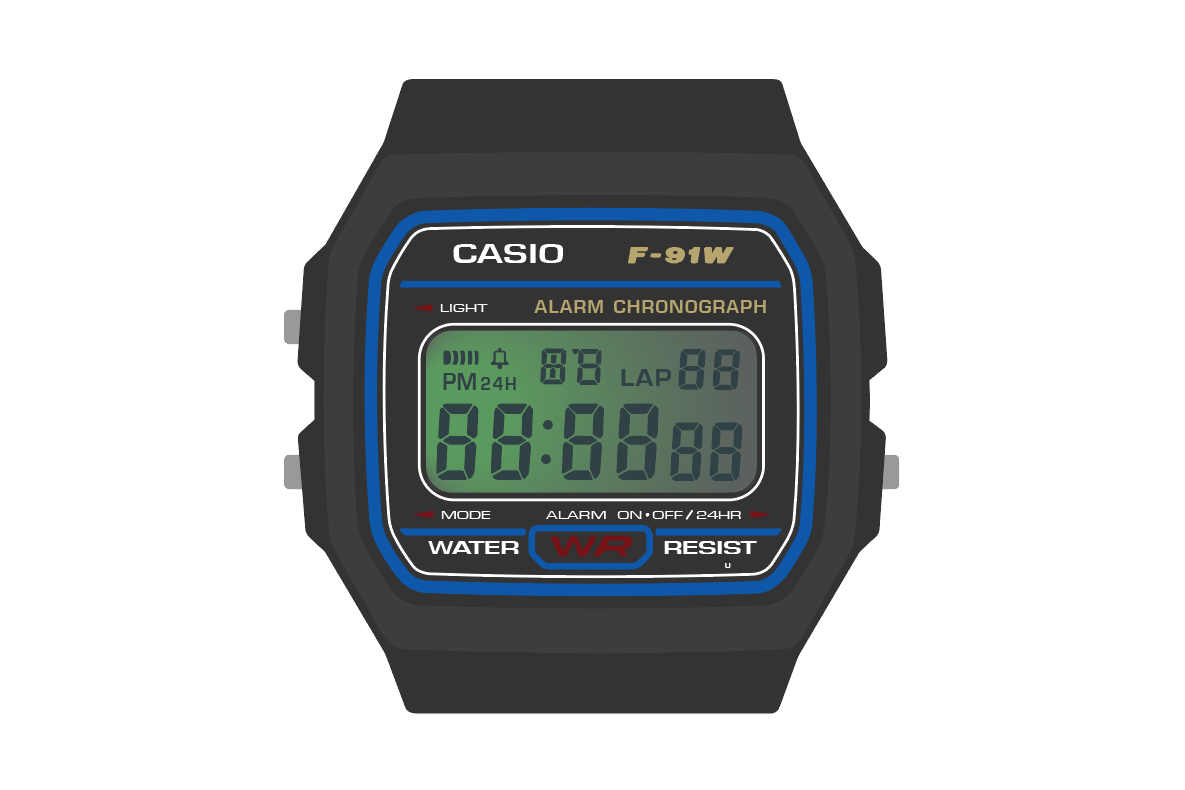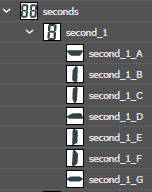The legendary F-91W now has its online version, and it's fully functional. Have fun 🙂
I love my Casio F-91W. Its simplicity, toughness, long-lasting battery life. It makes it special to me.
I have been wearing it for years now. But when I realized no one bothered to make an online version of it (in case you forgot yours at home), I decided to go on with this project and make it myself.
First, I took a close-up photo of my F-91W.
Then, I contoured and created all the shapes in Adobe Illustrator.
By this, I mean all the elements of the watch, e.i.:
- the 7, 8 and 9 segments displays
- the case, the outlines
- the texts
- etc...
Thanks to other close-up photos online, I managed to draw the rest of the element which weren't on my close-up photo.
Then, I colored all the elements. You can see below all of the elements which make up the digital display.
The next step is to make identifiable all of the elements you want to interact with. The goal is to manually display/hide each segments/elements on the display with JavaScript to simulate the watch display's behavior.
Below is an example of a tree structure of SVG elements. I assigned them IDs so I can select them in JavaScript.
seconds - The "seconds" group of elements.
second_1 - The "unit" 7 segment display.
second_1_A - The A segment of the 7 segment display.
second_1_B - The B segment of the 7 segment display.
...
second_2 - The "tenth" 7 segment display.
...
minutes - The "minutes" group of...
...
Here is how the "second" unit display (not tenth display) looks in Adobe Illustrator.
Then I exported the SVG to interact with it in JS.
The whole code is available for you in the
demorepository.
I coded it with the same approach as you would in C/C++ microcontroller programming. Back in 1989 and still to this day, the Casio F-91W operating system is programmed on a small microcontroller, which has an internal clock, 3 inputs (3 buttons) and 1 output (the digital display). I programmed it with the same straightforward approach.
There are 3 JavaScript classes:
CasioF91Wmanages the Casio F-91W inputs. I see this as the case of the watch: you can touch it, press the buttons, etc. This class is used to instantiate the watch.CasioF91WOperatingSystemis the Casio's operating system. Programmed with a simple straightforward approach: 3 inputs (3 button) triggered by theCasio91Wclass, and 1 output (digital display) given to theCasioF91WDigitalDisplayclass to display the elements.CasioF91WDigitalDisplayis the Casio's digital display. It is given a boolean to display or not each single elements of the display: segments of the 7, 8 or 9 segments displays, icons, backlight, etc.
The whole JavaScript operating system instructions are running in a setInterval function, which simulates the original C/C++ program's main loop.
The problem with JavaScript's setInterval function, is that its frequency (execution rate) varies because of the program's interpretation time. On the original watch, the internal date time is calculated on the system's clock, which has a constant frequency. Therefore, I couldn't use setInterval function to simulate the watch's date time, alarm and stopwatch since it's not accurate.
To solve this problem, I used JavaScript's Date() class, which itself is based of the operating system's clock, so it is very precise. On every execution loop, I get the current machine's time with Date(), so it's always precise. To allow the user to set a custom date time, I store their wished date time into as offset variable, which I add to the Date() object.
With this approach, I programmed the Casio F-91W with multiples layers (watch case, operating system, digital display) so it looks like the orignal program inside the watch.
This project is licensed under the MIT License - see the LICENSE.md file for details.
Alexis Philip (Website).



